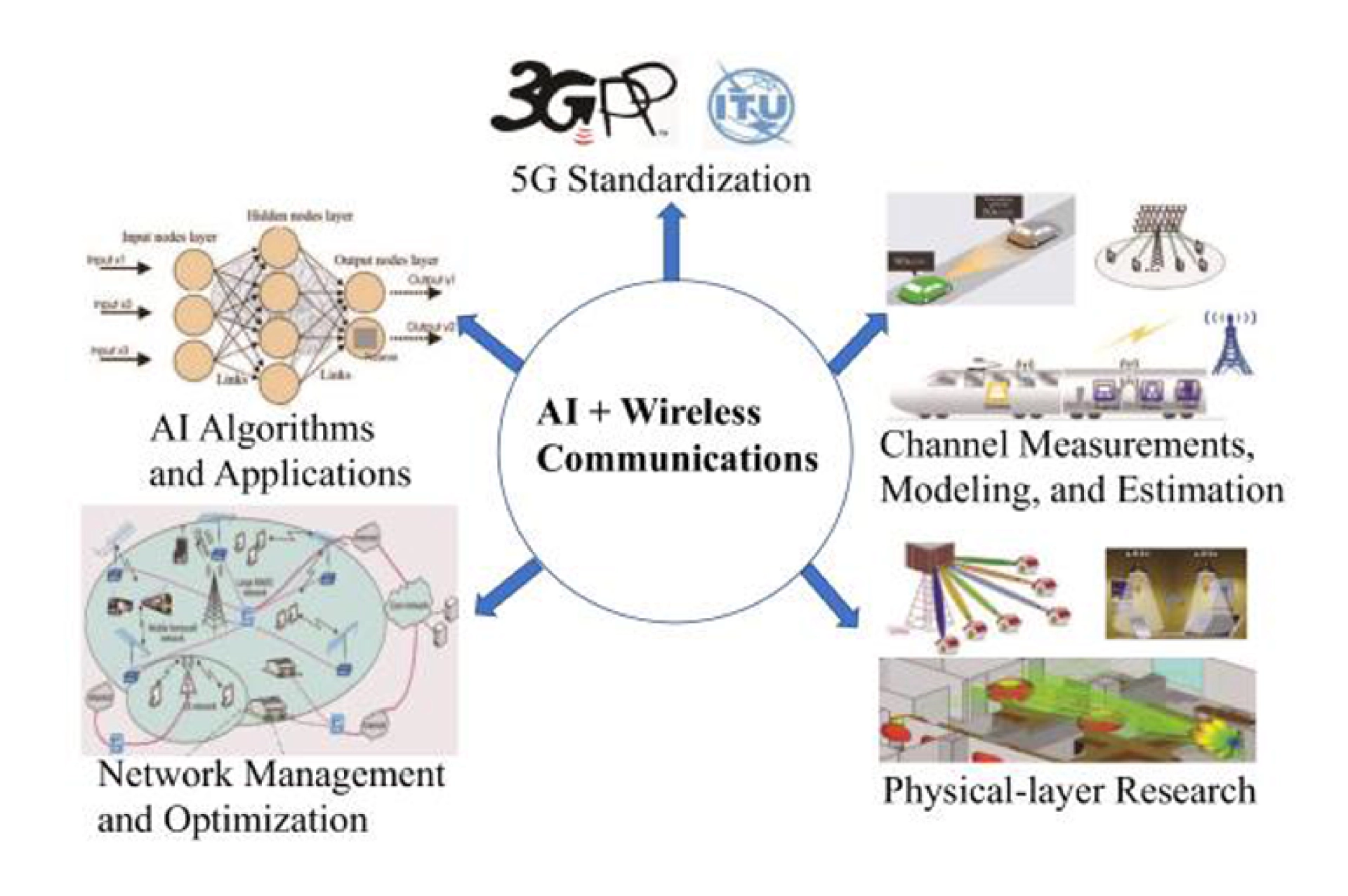M.Tech in Advanced Wireless Communication
Overview
Mahindra University offers an M.Tech. degree program in Advanced Wireless Communication. This will be a two-year program where the students will be involved in the latest and the most advanced wireless communication technologies of 4G (Long Term Evolution (LTE and LTE-Advanced)), 5G New Radio (5G NR) and the 6G. The students will get an opportunity to delve into the advanced Physical (PHY) and Medium Access Control (MAC) layer technology drivers/enablers of 4G, 5G and 6G such as new waveforms (modulation techniques), Radio Resource Management (RRM), Link Adaptation, Software Defined Network (SDN), green communication, ultra-dense networks (UDN), Multiuser Multiple Input Multiple Output (MU-MIMO), scalable Orthogonal Frequency Division Multiplexing (OFDM) technology, low latency slot structure design, cognitive radio, advanced LDPC channel coding, adaptive beam forming Non-orthogonal Multiple Access (NoMA), D2D, small cells, heterogenous networks, AI enabled wireless communication, IoT communication, Security for 5G RF communication, advanced algorithms of PHY and MAC, cloud computing, vehicular communication, and the wireless system design aspects of 4G, 5G and 6G among others.
The students get the opportunity to use the latest Universal Software Radio Peripherals (USRPs) from NI and MATLAB simulator software for 4G, 5G and beyond. The labs will be made available to M.Tech. students to learn using the entire suite of MATLAB tools and deep learning based wireless communication kits/set ups. Most importantly, the students will also have an opportunity to learn how to develop the link and system level simulators of 4G, 5G and beyond systems as per the requirements of International Mobile Telecommunications-Advanced (IMT-A) and ITU-R requirements.
Further, students will also learn the 4G LTE and 5G NR communication system design using deep radio set up, inclusive vehicular communication set ups are also available to learn the real time vehicular communication system development and verification.
The Dissertation (project work) in the final semester enables students to apply concepts and techniques learnt during the program. It is a research-driven program with close links to the industry.
Students of the M.Tech. program can expect to work with prospective employers such as Intel, Qualcomm, Broadcom, Samsung R &D, Ericsson, NVidia, Vodafone, Reliance communication, and many other companies that are in the 5G communication system design or manufacturing and are having difficulty in finding talent to meet their needs.
The outcome from this program is to improve the world through transformative education and impactful research by producing outstanding graduates who are knowledgeable, creative, and passionate for furthering research in area of wireless communication through innovative and collaborative work.

Figure 1. Evolution of Wireless Communication Technologies

Figure 2. Research aspects that bring AI technologies into beyond 5G wireless networks
Eligibility
Admission Process
Expected Program Outcomes
Students graduating from this program are expected:
CURRICULUM
1st Semester
| S. No | Code | Course | L | T | P | Credits |
|---|---|---|---|---|---|---|
| 1 | EC 5151 | Modern Digital Communication Techniques | 3 | 0 | 0 | 3 |
| 2 | EC 5152 | 5G Wireless Communication Networks and Design | 3 | 0 | 0 | 3 |
| 3 | EC 5153 | Communication Channel Models | 3 | 0 | 0 | 3 |
| 4 | EC 5154 | Optimization Techniques for Communications | 3 | 0 | 0 | 3 |
| 5 | EC 5155 | Machine Learning | 2 | 0 | 2 | 3 |
| 6 | EC 5156 | 5G Wireless Communication lab | 0 | 0 | 2 | 1 |
| Total Credits | 16 | |||||
2nd Semester
| S. No | Code | Course | L | T | P | Credits |
|---|---|---|---|---|---|---|
| 1 | EC 5251 | Optical Wireless Communication | 3 | 0 | 0 | 3 |
| 2 | EC 5252 | Deep Learning for Communications | 3 | 0 | 0 | 3 |
| 3 | EC 5253 | Security for Wireless Communication Systems | 3 | 0 | 0 | 3 |
| 4 | EC 5254 | 6G Wireless Communication Evolution | 3 | 0 | 0 | 3 |
| 5 | EC5255 | RF Front-end Systems | 3 | 0 | 0 | 3 |
| 6 | EC52XX | Elective I | 3 | 0 | 0 | 3 |
| 7 | EC 5256 | AI/ML for Communication Lab | 0 | 0 | 2 | 1 |
| 8 | EC5257 | IoT Communication Lab | 0 | 0 | 2 | 1 |
| Total Credits | 20 | |||||
3rd Semester
| S. No | Code | Course | L | T | P | Credits |
|---|---|---|---|---|---|---|
| 1 | EC 5351 | MIMO Wireless Communication | 3 | 0 | 0 | 3 |
| 2 | EC 53XX | Elective II | 3 | 0 | 0 | 3 |
| 3 | EC53XX | Elective III | 3 | 0 | 0 | 3 |
| 4 | EC 53XX | Thesis Phase I | 0 | 0 | 10 | 5 |
| 5 | EC53XX | Special Topics in Communication | 1 | 0 | 0 | 1 |
| Total Credits | 15 | |||||
4th Semester
| S. No | Code | Course | L | T | P | Credits |
|---|---|---|---|---|---|---|
| 1 | EC 5401 | Masters’ Thesis | 0 | 0 | 24 | 12 |
| Total Credits | 12 | |||||
Potential Electives
| Course Code | Course | L | T | P | C |
|---|---|---|---|---|---|
| EC 53XX | Vehicular Communication Networks | 3 | 0 | 0 | 3 |
| EC 53XX | Cellular Broadband IoT | 3 | 0 | 0 | 3 |
| EC 52XX | Error Correction Codes | 3 | 0 | 0 | 3 |
| EC 53XX | Cognitive Radio | 3 | 0 | 0 | 3 |
| EC 53XX | Tele-traffic Engineering | 3 | 0 | 0 | 3 |
| EC 53XX | Antennas for Wireless Communication | 3 | 0 | 0 | 3 |
| EC 53XX | Broadband Access Networks | 3 | 0 | 0 | 3 |
| EC 53XX | Wireless Networks Design and Testing | 3 | 0 | 0 | 3 |
| EC 53XX | RF and Microwave Engineering | 3 | 0 | 0 | 3 |









